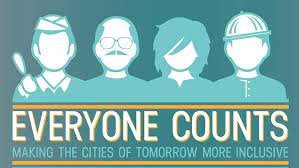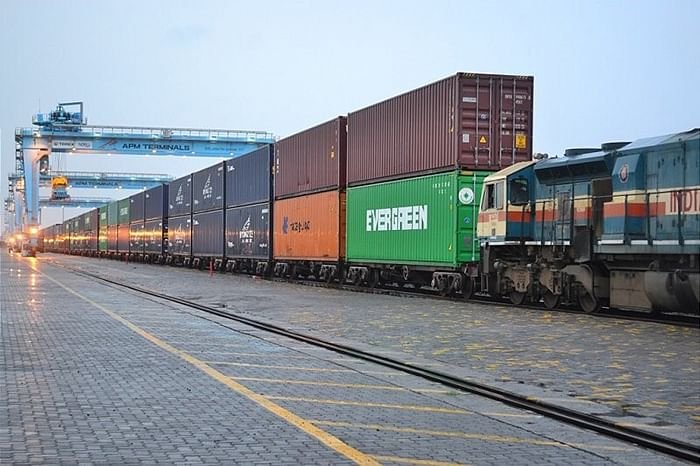Blog
July 10th Current Affairs
- July 11, 2021
- Posted by: admin
- Category: Culture Current Affairs Daily News Defense & Security Disaster Management Economy Education Environment & Ecology Ethics Geography Governance Health History International Relation Persons in News Polity Science & Technology Social Issues Sports Uncategorized UPSC Notification Videos
1. Inclusive Cities.

IN NEWS:
- National Institute of Urban Affairs conducts Webinar to Commemorate the Launch of the Inclusive Cities Centre.
- The Centre, setup with strategic support from GIZ India, will work towards mainstreaming inclusive approach to urban development.
KEY POINTS:
- Inclusive Cities – Approaches for making Indian cities more accessible, safe, and inclusive forALL.
- The webinar was a part of the 45th anniversary celebrations of the National Institute of Urban Affairs (NIUA).
- The webinar aimed to bring conversations regarding inclusivity to the mainstream and will mark the engagement of thinkers, practitioners, researchers and sector experts for creating an enabling environment for all in cities.
- The Inclusive Cities Center (ICC), set up at NIUA, aims to develop tools and frameworks for institutional strengthening of city authorities to promote inclusivity.
- A knowledge repository is also proposed for sharing learnings from global good practices of inclusive cities.
- ICC will facilitate cities in evidence-based planning and investments to improve quality of life and productivity for all.
- It will focus on the most vulnerable of the city residents including the urban poor, persons with disabilities, women, children, youth and elderly.
- The centre will implement activities to address challenges related to spatial, social, economic and digital inclusion in cities.
Important Information:
About NUIA:
Established in 1976, NIUA has been supporting the Government of India in policy formulation, research, and capacity building for the successful implementation of urban development projects such as the Smart Cities Mission, Swachh Bharat Mission, Heritage City Development and Augmentation Yojana (HRIDAY), Atal Mission for Rejuvenation and Urban Transformation (AMRUT).
SOURCE:PIB
2. GIS Enabled Land Bank.

IN NEWS:
- GIS Enabled Land Bank gaining popularity;
- Website has seen a 30% increase in page views each month since April 2021.
KEY POINTS:
- The Land Bank system has been developed by the Integration of Industrial Information System (IIS) with state GIS (Geographic Information System).
- IIS portal is a GIS-enabled database of industrial clusters/areas across the states.
- It is a one-stop repository of all industrial infrastructure-related information – connectivity, infra, natural resources & terrain, plot-level information on vacant plots, line of activity, and contact details.
- Currently, the IILB has approximately 4000 industrial parks mapped
- On the system, more than 3,300 industrial parks across 31 states/UTs covering about 4,75,000 hectares of land have also been mapped out.
- The information available on the system will include drainage, forest; raw material heat maps (horticulture, agricultural, mineral layers); multilayer of connectivity.
- IIS has adopted a committed approach towards industrial upgrading, resource optimization, and sustainability.
SOURCE:PIB
3. Rail Cargo movement between India and Nepal.

IN NEWS:
- Rail Cargo movement between India and Nepal gets a big boost.
- Cargoes in all categories of wagons that can carry freight on Indian Railways network within India can also now carry freight to and from Nepal.
- India and Nepal sign a Letter of Exchange (LoE) to the India-Nepal Rail Services Agreement (RSA) 2004.
KEY POINTS:
About Rail Services Agreement (RSA), 2004:
- The Rail Services Agreement was executed in 2004 between the Ministry of Railways, Government of India and the Ministry of Commerce, the Govt. of Nepal for introduction of freight train services between these two countries to and from Birgunj (Nepal) via Raxaul (India).
- The agreement guides movement between India and Nepal by rail.
- The Agreement shall be reviewed every five years and may be modified (through Letters of Exchange) by the Contracting Parties by mutual consent.
- In the past, there have been amendments to RSA through LoE on three occasions.
- First such amendment was in 2004.
- Second LoE was signed in 2008 at the time of introduction of bilateral cargo between the two countries which required introduction of new customs procedures.
- Third LoE was signed in 2016 enabling rail transit traffic to/from Visakhapatnam Port in addition to existing provision of rail transportation through Kolkata/Haldia Port.
Benefits of the LoE
- This liberalization will allow market forces to come up in the rail freight segment in Nepal.
- Likely to increase efficiency and cost- competitiveness, eventually benefiting the Nepalese consumers.
- Move will reduce transportation costs for automobiles and certain other products whose carriage takes place in special wagons.
- Another milestone in India’s efforts to enhance regional connectivity under the “Neighbourhood First” policy.
SOURCE:PIB
4. BRICS countries agree to STI led.

IN NEWS:
All BRICS countries have agreed to the STI-led BRICS Innovation Cooperation Action Plan (2021-24) proposed by India during 12th Meeting of BRICS S&T Steering Committee.
KEY POINTS:
- Indian had proposed the plan to facilitate sharing of experiences of each other’s innovation ecosystem and networking of innovators and entrepreneurs.
- The Details of the Action Plan would be worked out by BRICS Science, Technology Innovation Entrepreneurship partnership (STIEP) Working Group.
- It was agreed that the proposal may be forwarded to BRICS STIEP working group through the respective country’s STI focal point.
- The BRICS officials discussed in detail about the thematic areas for this year’s call for proposals at the meeting and unanimously agreed for collaboration in ten thematic areas.
- The thematic areas included Transient Astronomical Events and Deep Survey Science, Antimicrobial Resistance (AMR): Technologies for Diagnosis and Treatment, Simulation and Big Data Analytics for Advanced Precision Medicine and Public Healthcare, HPC and Big Data for Sustainable Development: Solving Large Scale Ecological, Climate and Pollution Problems, Innovation and Entrepreneurship on Photonic, Nanophotonics, and Metamaterials for Addressing Bio-medicine, Agriculture, Food Industry and Energy Harvesting Issues, Materials Science and Nanotechnology for Addressing Environmental, Climate Change, Agricultural, Food, and Energy Issues, Renewable Energy including Smart Grid Integration, Ocean and Polar Science and Technology Water Treatment Technology Research in Aeronautics and Aerospace.
Important Information:
About BRICS
- BRICS is an acronym for the grouping of the world’s leading emerging economies, namely Brazil, Russia, India, China and South Africa.
- The BRICS Leaders’ Summit is convened annually.
- BRICS does not exist in the form of organization, but it is an annual summit.
- The Chairmanship of the forum is rotated annually among the members, in accordance with the acronym B-R-I-C-S.
- Together, BRICS accounts for about 40% of the world’s population and about 30% of the GDP (Gross Domestic Product), making it a critical economic engine.
- It’s an emerging investment market and global power bloc.
SOURCE:MINT
5. Kappa Variant.

IN NEWS:
- Recently, two cases of the Kappa variant of Covid-19 have been recorded in Uttar Pradesh (UP).
- According to the World Health Organisation (WHO), Kappa is one of the two Covid-19 variants, the other being Delta, first identified in India.
KEY POINTS:
- As India raised objection over the B.1.617.1 mutant of the novel coronavirus being termed an “Indian Variant”, the WHO had named this variant ‘Kappa’ and B.1.617.2 ‘Delta’ just as it named various variants of the coronavirus using Greek alphabets.
- The Delta and Kappa variants are actually siblings, the direct descendants of a variant that earlier used to be referred to as the double mutant, or B.1.617.
- It is still listed among ‘variants of interest’ and not ‘variants of concern’ by the WHO.
Variants of Interest:
- They are SARS-CoV-2 variants with genetic changes that are predicted or known to affect virus characteristics such as transmissibility, disease severity, immune escape, diagnostic or therapeutic escape.
- Examples: Lambda, Iota, Eta and Kappa variants.
Variant of Concern:
- A variant for which there is evidence of an increase in transmissibility, more severe disease (e.g., increased hospitalizations or deaths), significant reduction in neutralization by antibodies generated during previous infection or vaccination, reduced effectiveness of treatments or vaccines, or diagnostic detection failures.
- Examples: Alpha, Beta, Gamma and Delta variants.
SOURCE:IE
